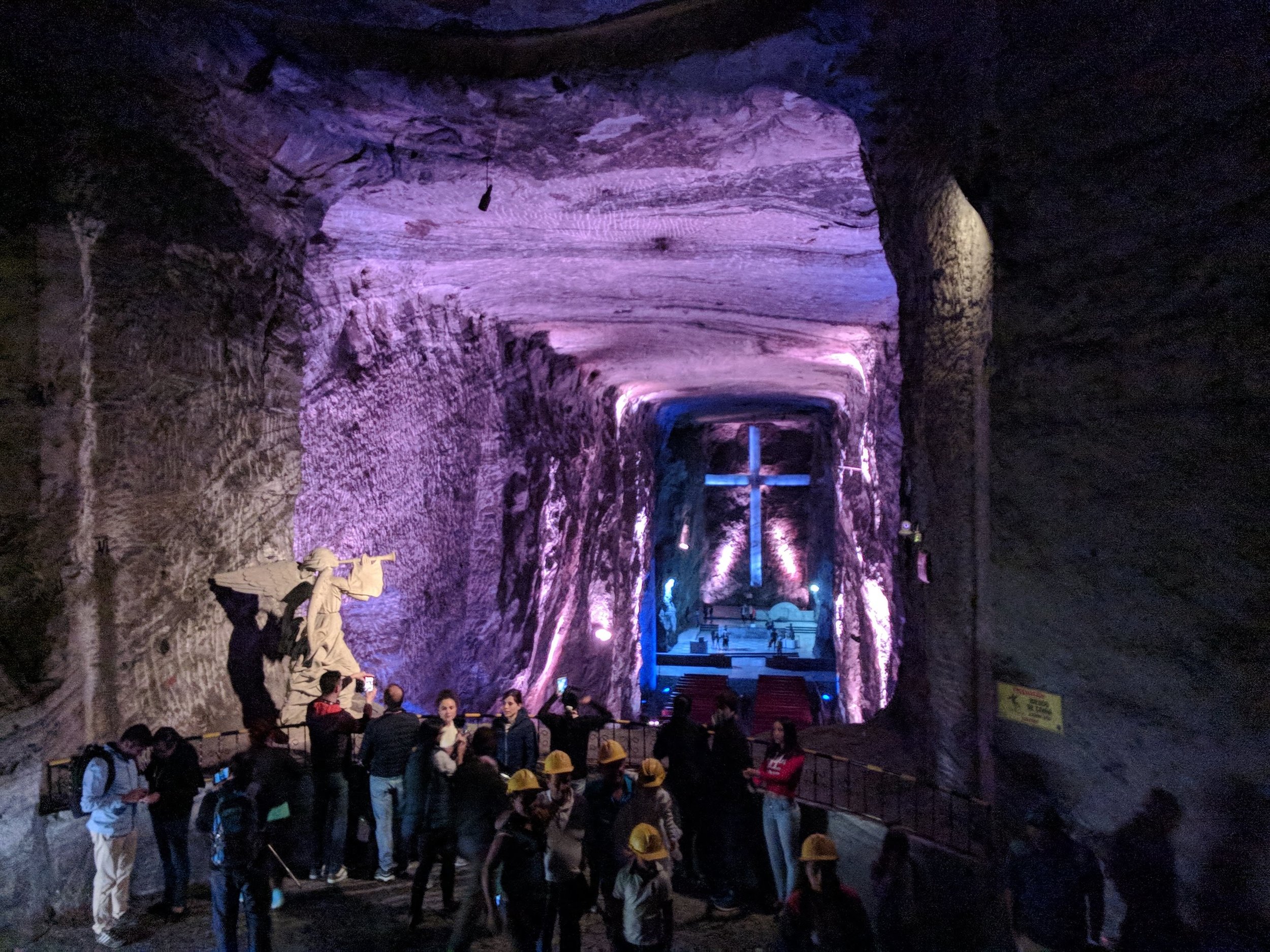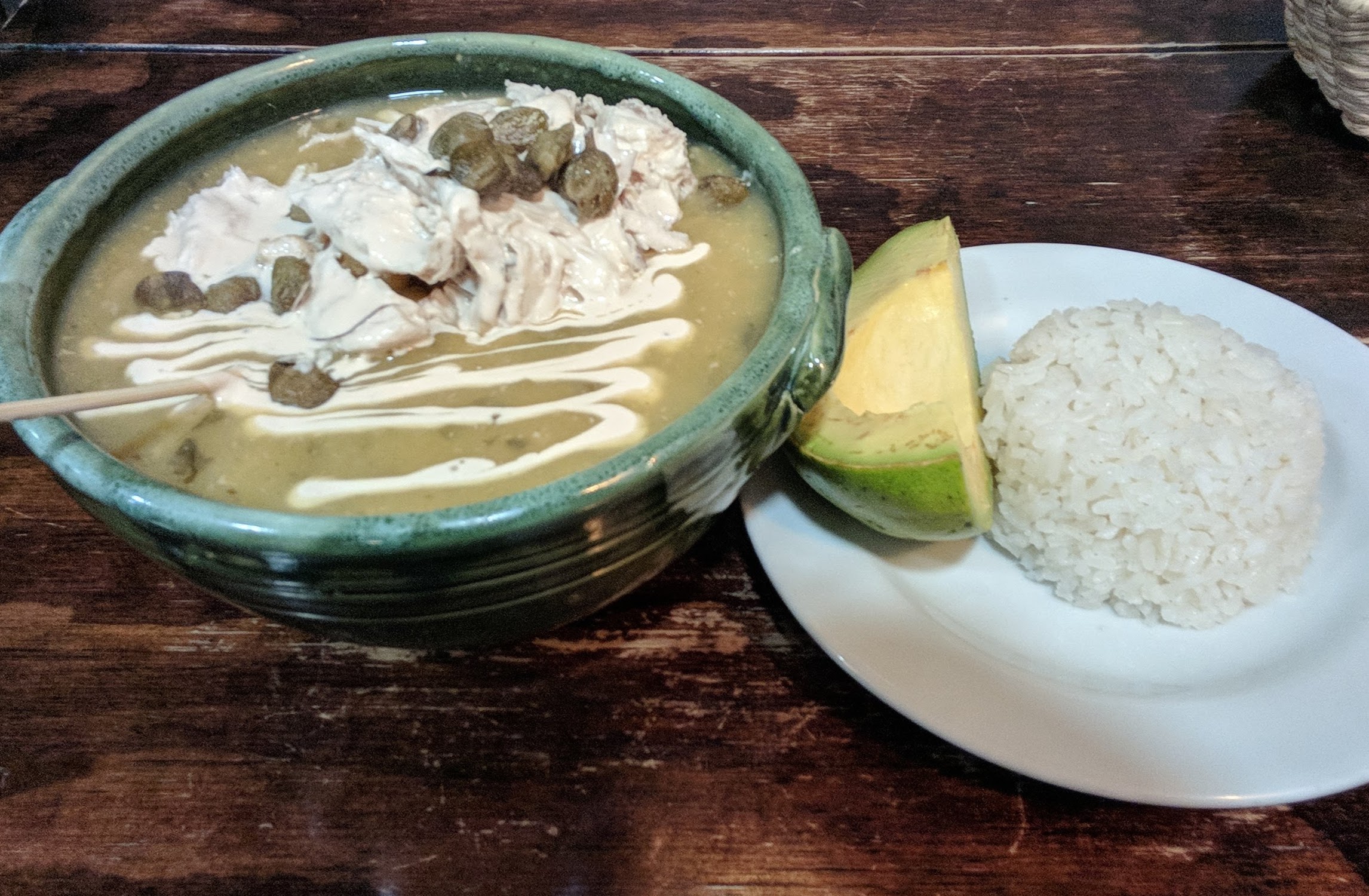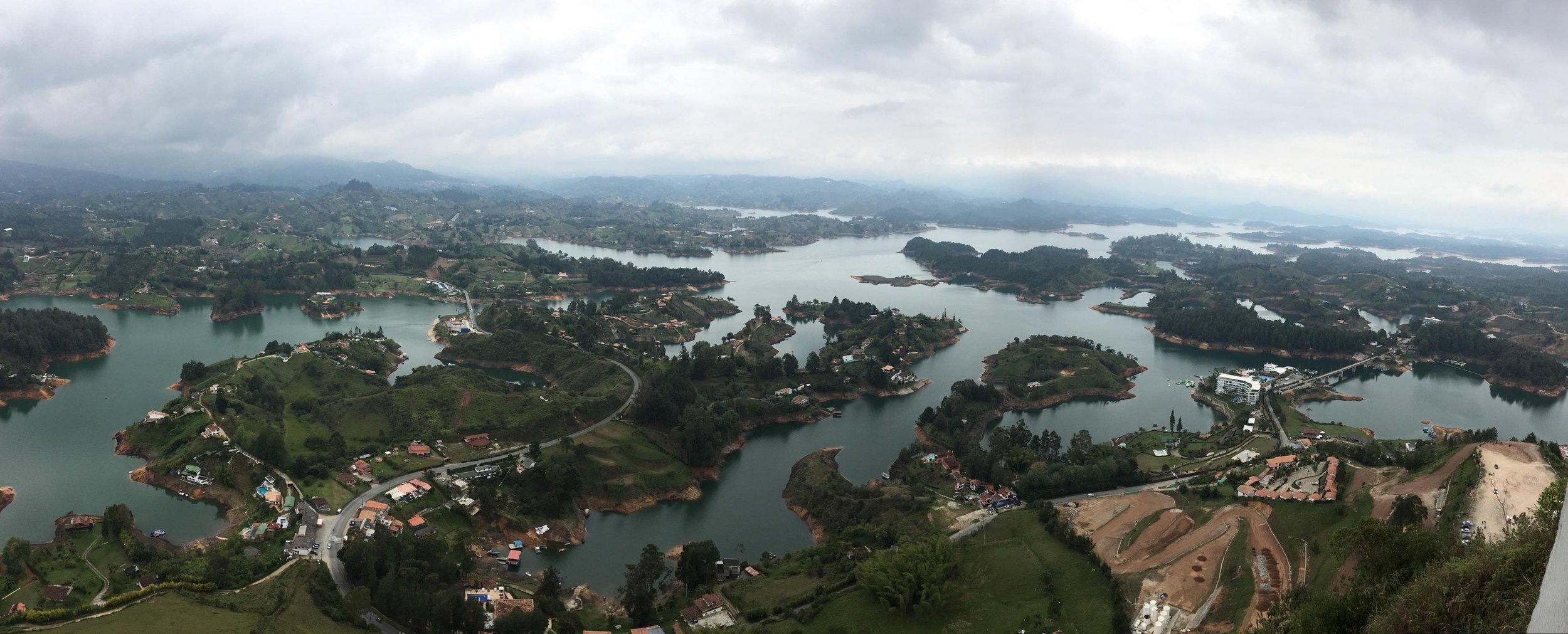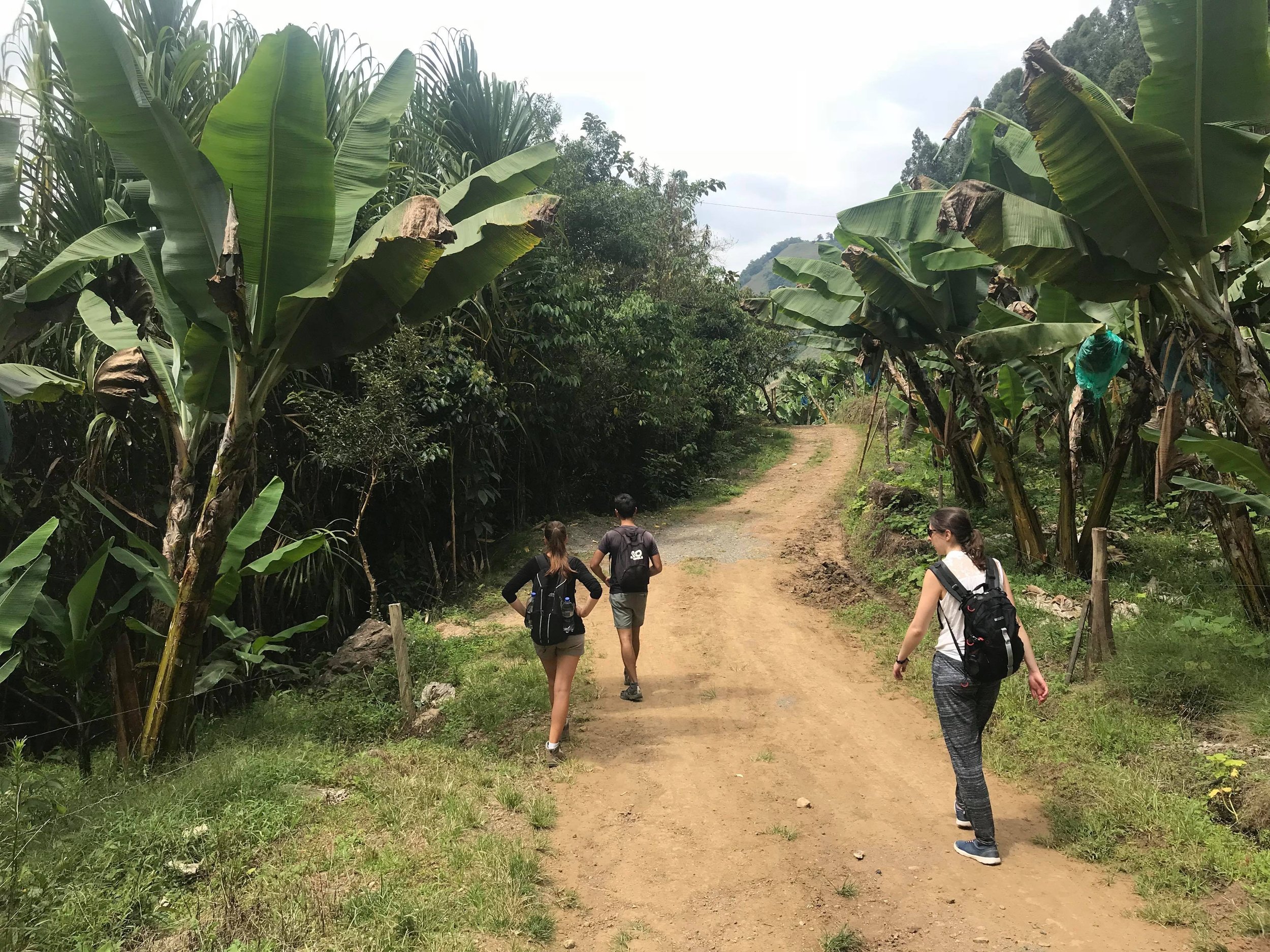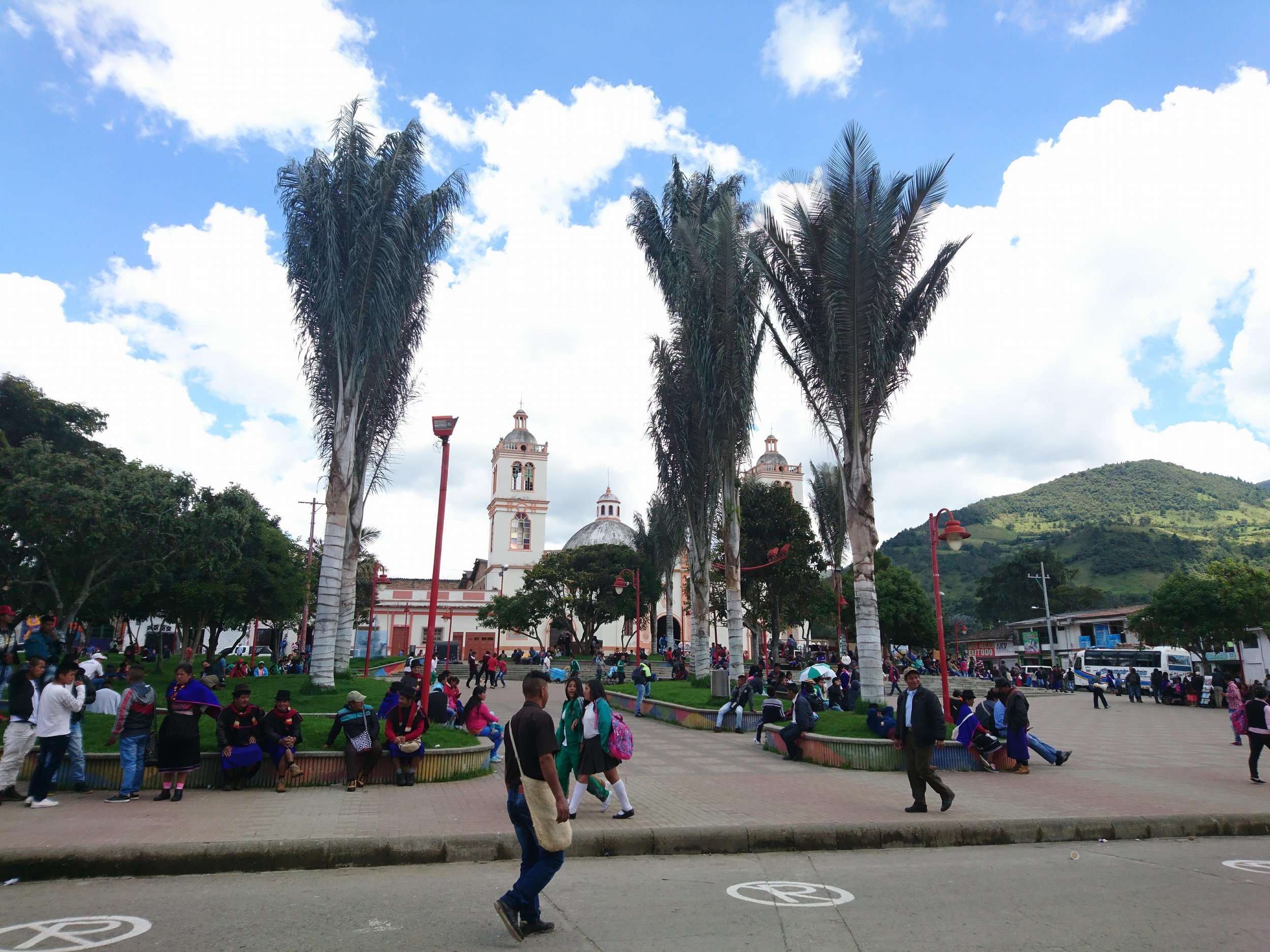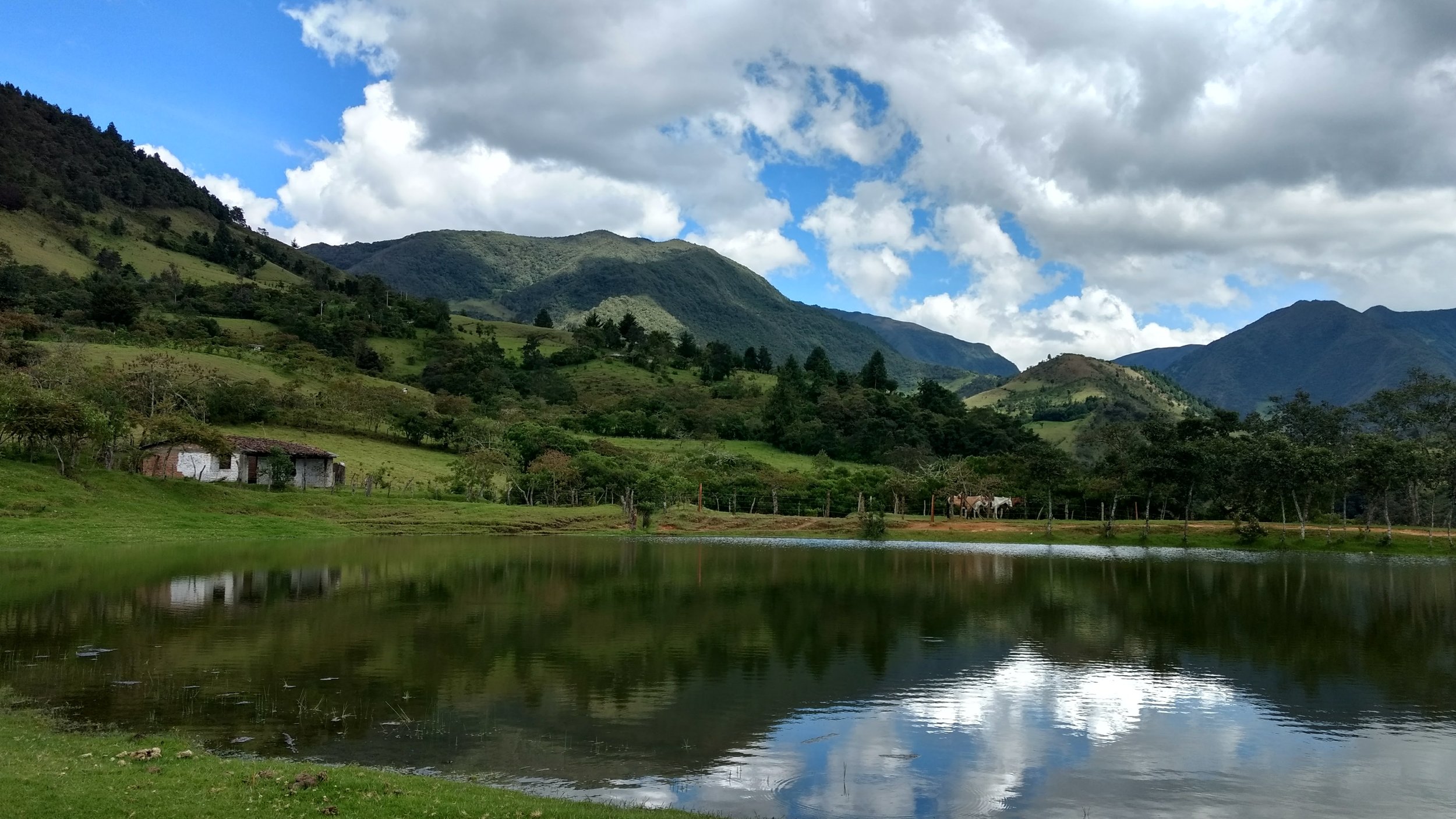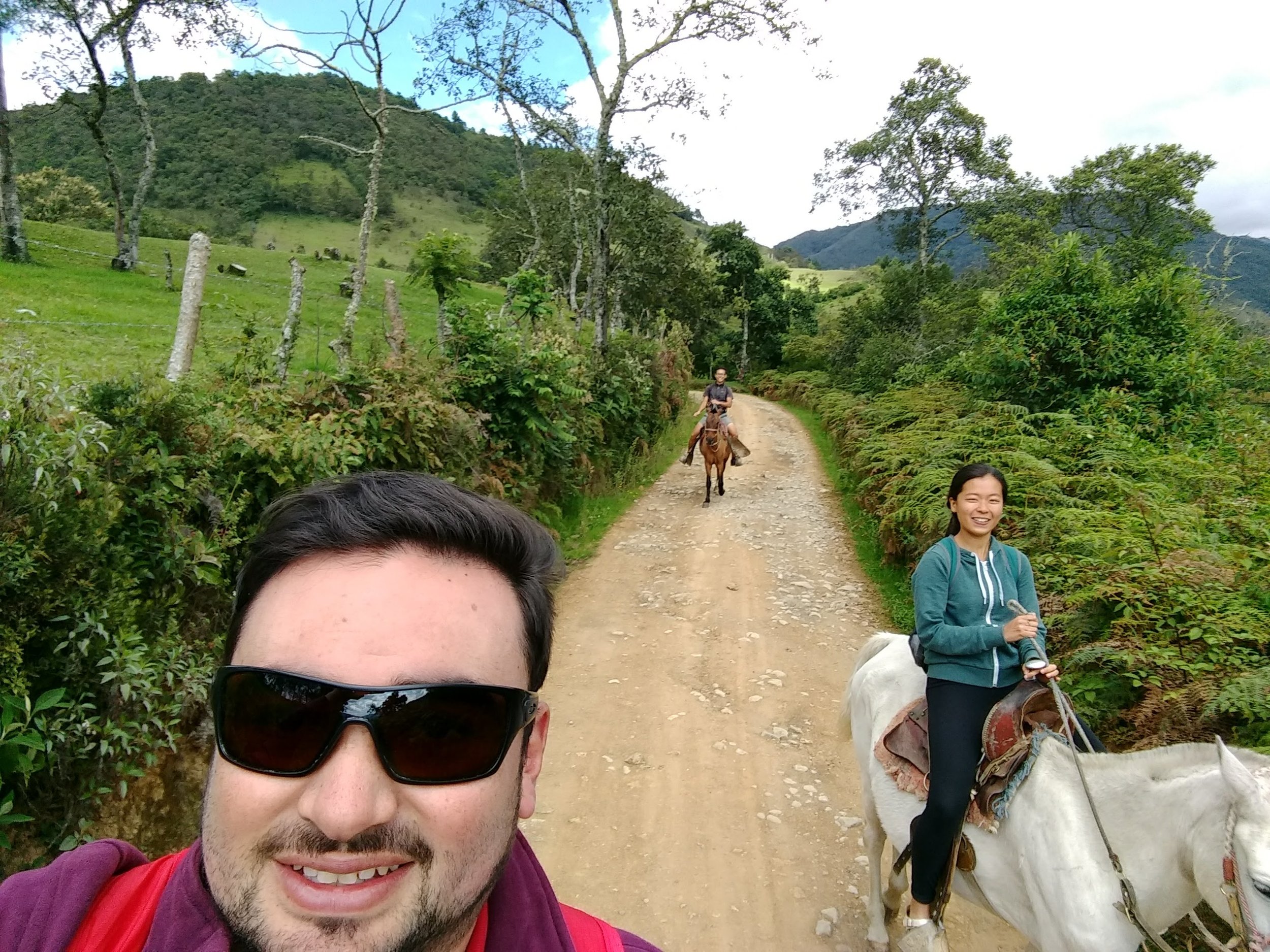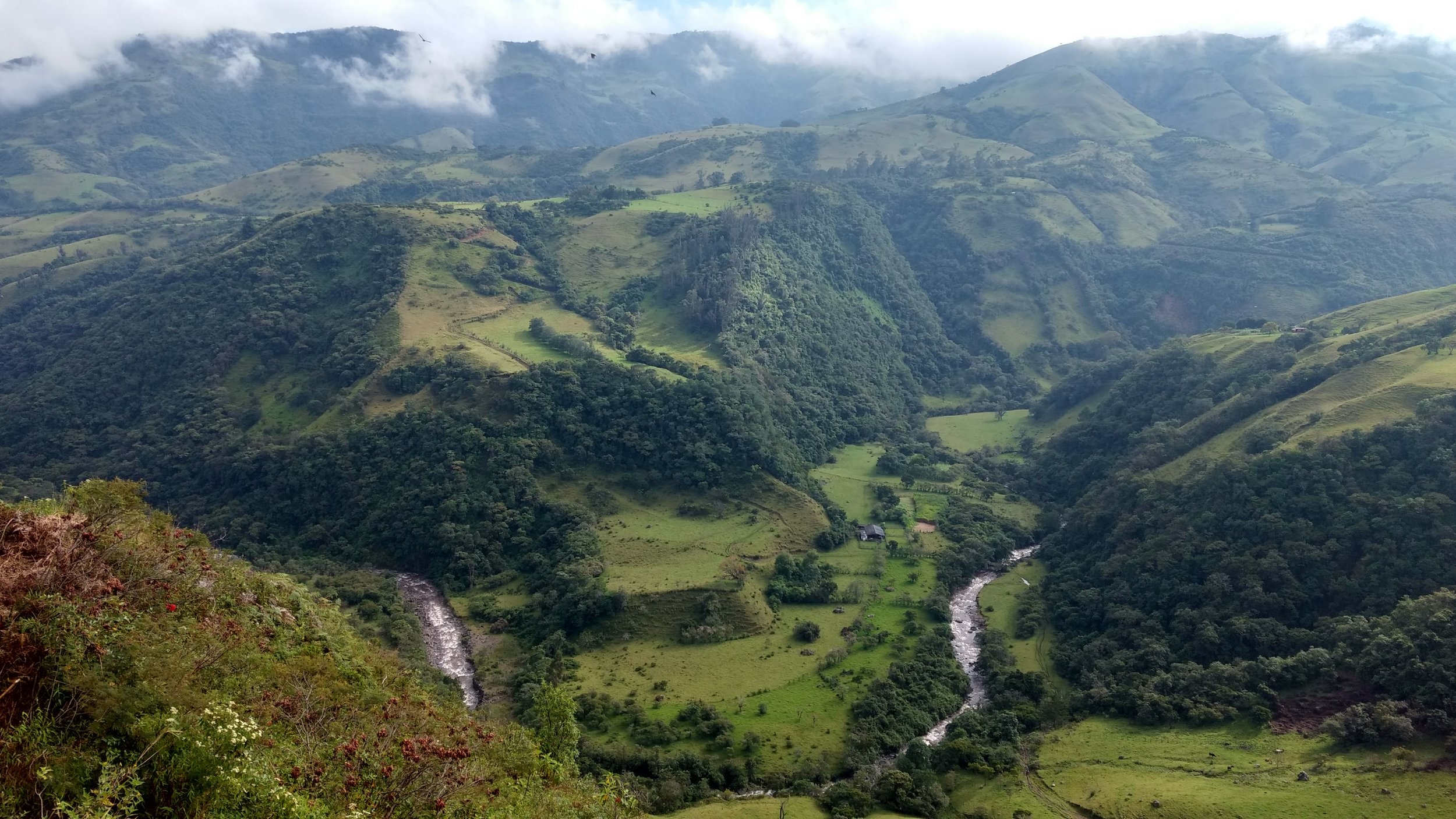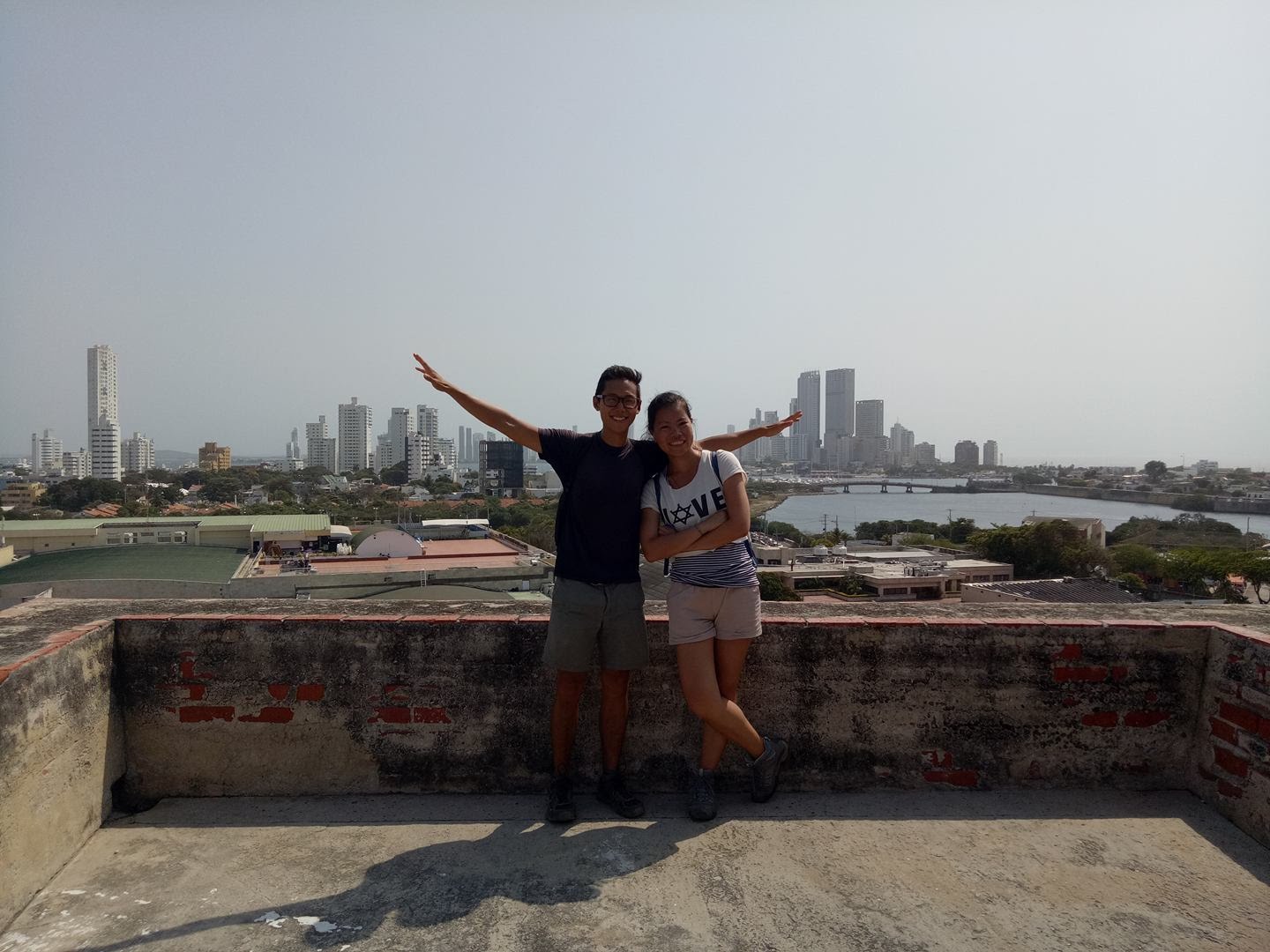One country was consistently at the top of backpackers' favorite places, Colombia. It happened to be the last country that I was visiting. Had I saved the best for last?
When most people think about Colombia, some things that come to mind might be drug trafficking, guerrilla groups, and kidnappings. Netflix's show, Narcos, certainly hasn't helped. While there are parts that aren't so friendly, it's misguided to generalize across the whole country. In the past couple decades, the country has really shed that image. The homicide rate is one of many such examples. Colombians strive to look forward- to focus on the positives and not dwell on the past. Talking about any of the above topics draws out strong opinions on both ends, but can still feel like taboo. It's an accepted truth that every single family has been affected by the intra-country conflict. Should they forget the past in order to keep peace and push towards the future? At what cost?
Intentional homicides in Colombia (per 100,000 people)
In 2016, the government signed a peace treaty with the Revolutionary Armed Forces of Colombia (FARC), one of the two major, leftist guerrilla groups in the country. The group was founded in 1964 by small farmers and land workers who banded together to fight inequality. Their protests eventually turned into an armed conflict, catching countless civilians in the crossfire between FARC and the government. The 52-year conflict is estimated to have killed more than 220,000 people and displaced almost 8 million more. And in order to finance their activities, FARC is notorious for facilitating drug trade, kidnappings, and extortions. The founding values clearly deteriorated over time.
In a high-level rundown of the deal, FARC laid down their arms and turned over their assets while the government promised: 1) investment in long-neglected rural areas, 2) amnesty for most group members, 3) political participation (e.g. creation of a political party, house seats, eligibility to run for public office), and 4) justice/reparation mechanisms for victims. While no one denies that peace is essential, there's disagreement about what should be exchanged for it. Proposed investment is expected to cost more than $40 billion. Some members who committed unspeakable atrocities will not be punished in the court of law. Is conceding political power fair or wise? Five seats in each of the lower and upper houses are guaranteed for the new FARC party. Colombians turned down the first draft of the deal in a 2015 referendum, largely because they didn't feel like the treaty levied enough punishment. Unfortunately, they didn't get a chance to vote on the revised deal- it was brought straight to Congress and eventually ratified. In a fitting representation of the tension surrounding this process, President Santos received a Nobel Peace Prize for signing peace with FARC but now also has the lowest presidential popularity in the history of Colombia.
That's not the end of today's history lesson, but there's some other details about Colombia I want to point out first!
Colombian cities are astoundingly diverse. On one hand, you have the urban sprawls. I walked my way through Medellin, Bogota, Cali, Cartagena, and Santa Marta. Without a doubt, Medellin was the most livable city I visited in South America. It reminded me of Berlin. Both metropolises have a dark and intense history from the 80's (Pablo Escobar and the Berlin Wall, respectively), are hubs of creativity and the arts, future-facing, innovative, tout a surprisingly reasonable cost of living, and provide efficient public transportation. The 'only' difference is the weather and language! I loved all the big cities in Colombia, but one downside was the constant barrage of vendors. The phrase "a la orden", which translates to "at your service" but really means "buy my stuff", is ingrained in my mind. I heard it dozens of times per day. In fact, I remember walking by a street stall and the guy lobbed a half-hearted "a la orden" while his face was buried in a newspaper. He sensed my general presence and instinctively called out. But Cartagena was another level. There, no means yes. It's not rocket science to identify the cause- it's the most touristic city in the country.
On the other hand, the essence of Colombia is captured in the small towns, the pueblitos. Places like Salento, Jardín, Filandia, Puracé, and San Agustín. Despite being renowned for it's coffee, Colombia's biggest export is actually mineral fuel (coal and petroleum), which makes up 48% of the country's exports. Coffee is second at 8%. As such, there's an entire region dedicated to the energy-boosting beans known as El Cafetero. Time in the region is best spent people-watching in the town square, walking and biking through the rolling green hills, lounging on the fences with the cows, sipping coffee at the local fincas, admiring the charmingly colorful houses, and playing tejo late into the night. The locals live a peaceful, simple lifestyle, where the coffee buds are still picked by hand. While walking from Filandia, I met José, a Colombian who lived in North Carolina for 13 years but moved back to start his own farm. He invited me in, showed me the many fruits and vegetables he grew, graciously offered guava and green oranges to tide me over on my walk, and was just the most friendly guy you could imagine. Then I stumbled upon one of the best views in South America as the sun set over a misty landscape. I dream about that idyllic scene. That's what a day should be like.
Colombian food gets a bad rap for lack of flavor. Or, as some would joke, no flavor at all. That's not totally true, but it's fair to say nothing blew my mind. The cooking isn't complex but the fare is satisfying. One of my favorite things was grabbing a sweet corn arepa topped with butter and cuajada (curdled cheese) from the many street stalls. Or savoring a scoop of the subtly sweet arroz de coco (coconut rice). Or downing a refreshing glass of limonada de coco (coconut lemonade) while thinking about what piece of fresh fruit I wanted to munch on. Sometimes, it was just a hearty portion of white rice and red beans. What's not to like about picking your way through a grilled fish? Yes, head included!
Approaching the end of my trip, I decided to slow down a bit. I didn't do any tours in Colombia, and I lingered in places. I ate at the same place so many times that they started calling me "el chinito". And I thoroughly enjoyed it. I tried to take the time to live like a local, maybe soaking up some of the Colombians' hopefulness, fun-loving nature, helpfulness, friendliness, dancing skills, and national pride. I also picked up plenty of Colombian slang, which is so extensive there are books devoted to the subject. I dedicated the title of the post to my favorite one. It simultaneously means cool, good, and bad, while also referring to female genitalia. Ahhh, the intricacies of Spanish.
--
I reserved a paragraph to talk about my travels to La Guajira, which is Colombia's most northeastern state. I jeeped up to Punta Gallinas, which is the northernmost tip of Southern America. On the way, I met Venezuelans and learned a great deal about the current situation there. To summarize, Venezuela's economy under Hugo Chavez (1999-2013) nationalized properties, which drive away investment and made the country solely reliant on oil export. In fact, Venezuela has the largest oil reserves in the world. But when oil prices cratered in 2016 to $26 a barrel, the economy couldn't cope due to a mismanagement of resources. Even though Chavez died in 2013, the situation has only worsened. There's no food because the farmlands nationalized by the government were left unused. I was stunned to learn that the average salary is only enough to buy a bag of rice. Millions of Venezuelans are fleeing the country, and the intentional homicide rate is twice as high as Colombia. I talked about inflation in Argentina, but that's nothing compared to Venezuela, where prices rose by 6,147% in the past year. I didn't visit the country on this trip, but I hope the situation improves sooner rather than later so we can see the real beauty of the country and its people.
--
Thanks and credits to Nick, Felicia, Jessica, Sabrina, and Raz for the photos.
https://atlas.media.mit.edu/en/profile/country/col/
https://www.indexmundi.com/facts/colombia/homicide-rate
http://www.financecolombia.com/colombia-brings-in-record-5-7-billion-usd-in-foreign-tourism-dollars/
http://money.cnn.com/2017/07/26/news/economy/venezuela-economic-crisis/index.html
https://www.washingtonpost.com/news/worldviews/wp/2016/08/24/the-staggering-toll-of-colombias-war-with-farc-rebels-explained-in-numbers/?noredirect=on&utm_term=.f1b48ab47af6
http://www.bbc.com/news/world-latin-america-36605769
https://en.wikipedia.org/wiki/Colombian_peace_process
